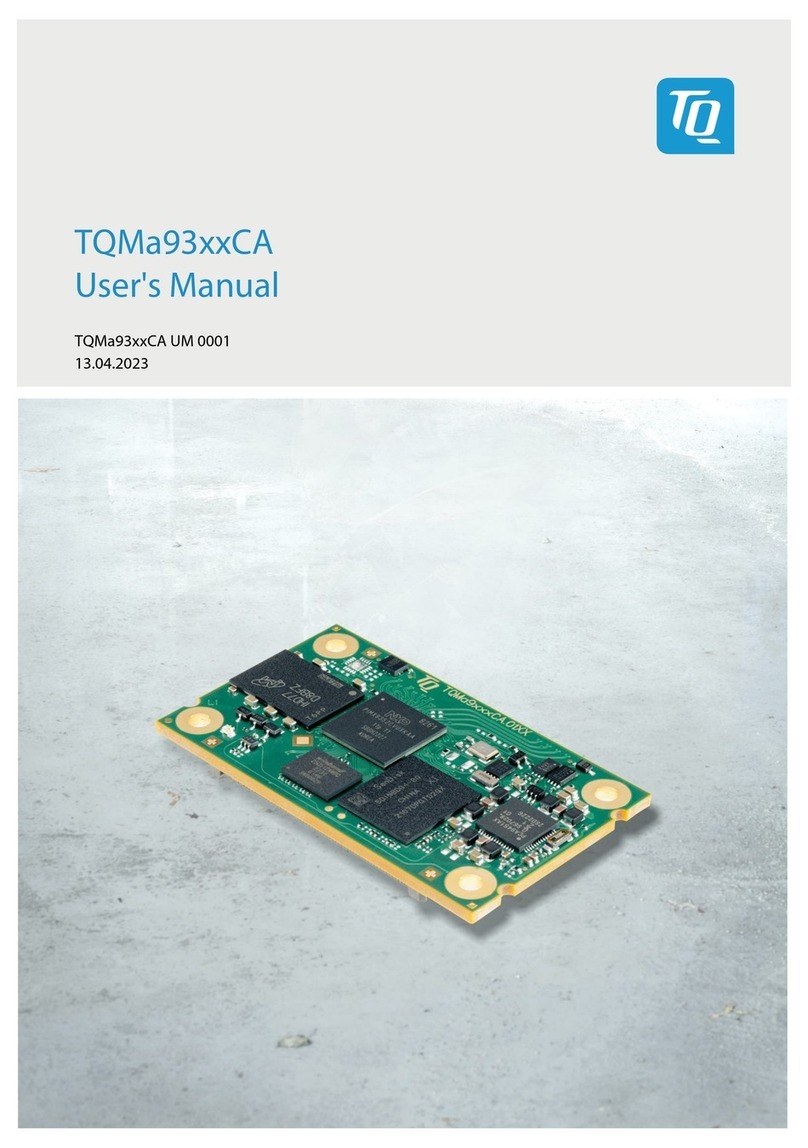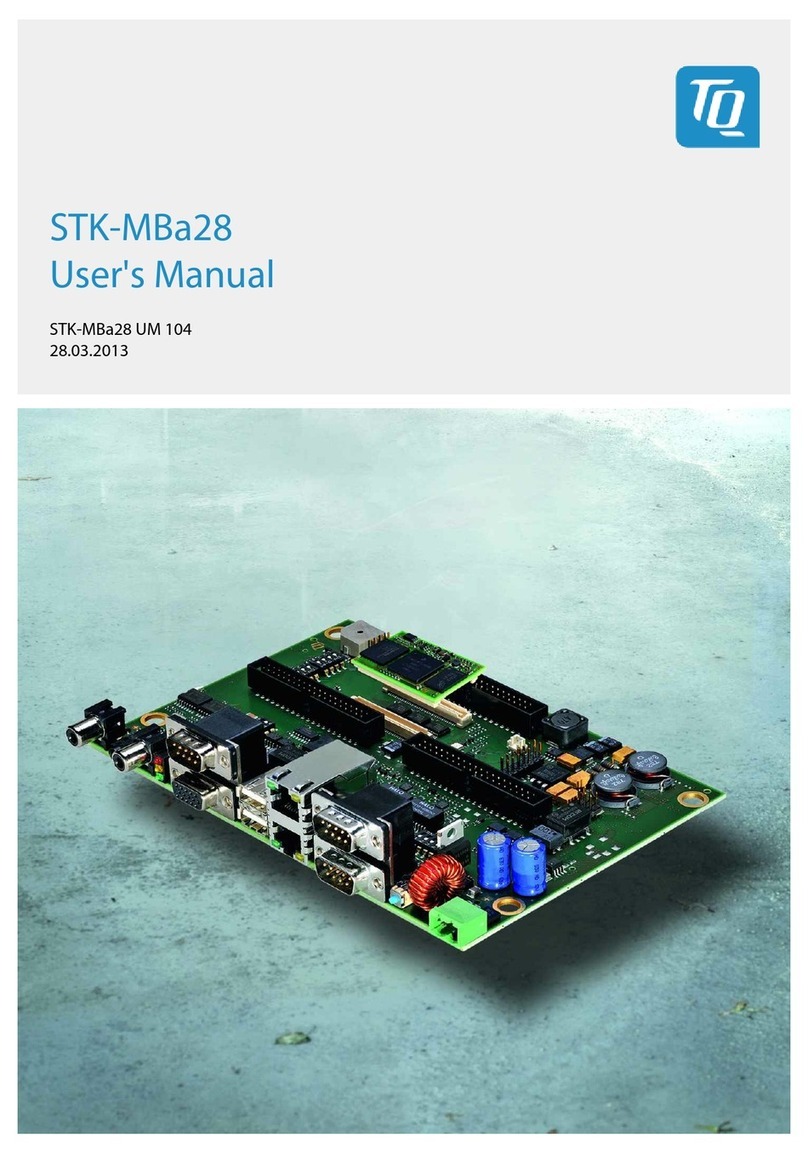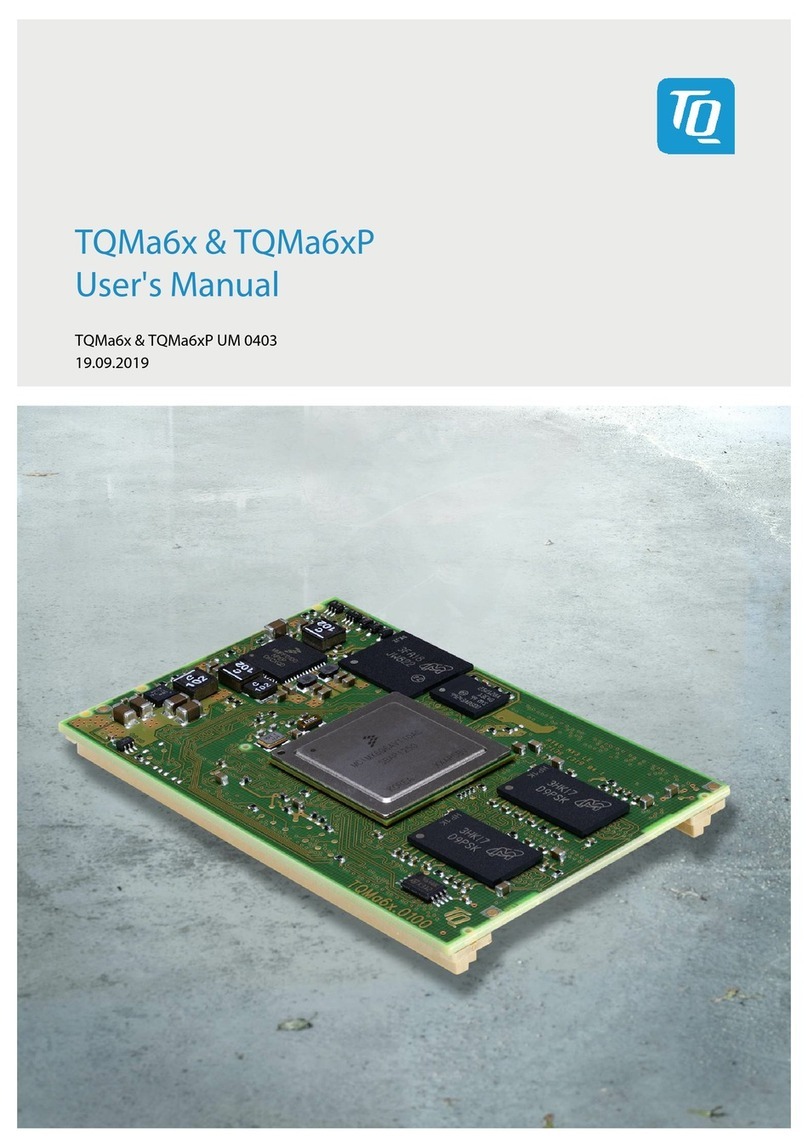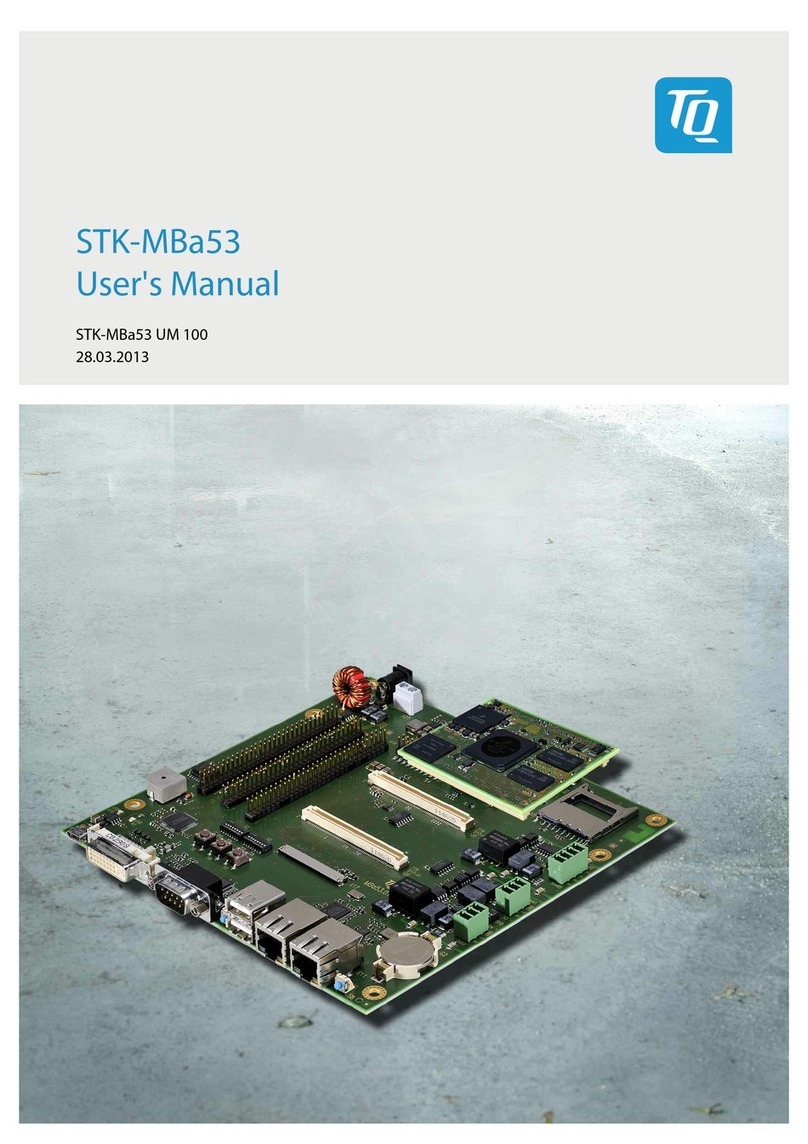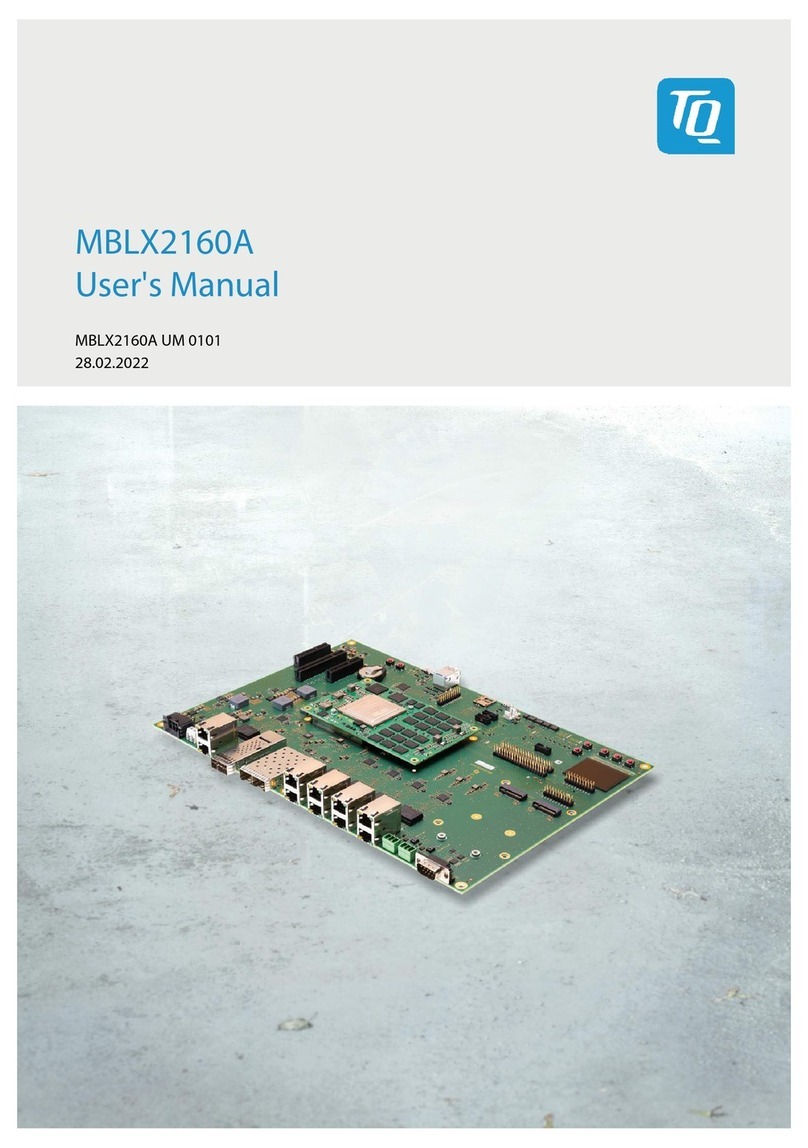
Preliminary User's Manual l MBa62xx UM 0001 l © 2023, TQ-Systems GmbH Page i
TABLE OF CONTENTS
1. ABOUT THIS MANUAL................................................................................................................................................................................1
1.1 Copyright and licence expenses.............................................................................................................................................................1
1.2 Registered trademarks...............................................................................................................................................................................1
1.3 Disclaimer......................................................................................................................................................................................................1
1.4 Imprint............................................................................................................................................................................................................1
1.5 Tips on safety................................................................................................................................................................................................2
1.6 Symbols and typographic conventions ...............................................................................................................................................2
1.7 Handling and ESD tips ...............................................................................................................................................................................2
1.8 Naming of signals........................................................................................................................................................................................3
1.9 Further applicable documents / presumed knowledge .................................................................................................................3
2. BRIEF DESCRIPTION ....................................................................................................................................................................................4
3. TECHNICAL DATA........................................................................................................................................................................................4
3.1 System architecture and functionality..................................................................................................................................................4
3.1.1 Block diagram...............................................................................................................................................................................................4
3.1.2 Functionality.................................................................................................................................................................................................5
4. ELECTRONICS................................................................................................................................................................................................7
4.1 System components...................................................................................................................................................................................7
4.1.1 TQMa62xx......................................................................................................................................................................................................7
4.1.2 I2C address mapping ..................................................................................................................................................................................8
4.1.3 RTC backup supply .....................................................................................................................................................................................8
4.1.4 Reset structure .............................................................................................................................................................................................9
4.1.5 Power supply................................................................................................................................................................................................9
4.2 Communication interfaces.................................................................................................................................................................... 13
4.2.1 UART- / Debug-interface........................................................................................................................................................................ 13
4.2.2 USB interface ............................................................................................................................................................................................. 14
4.2.2.1 USB OTG...................................................................................................................................................................................................... 14
4.2.2.2 USB Hub ...................................................................................................................................................................................................... 15
4.2.3 Ethernet interface .................................................................................................................................................................................... 16
4.2.4 LVDS ............................................................................................................................................................................................................. 17
4.2.5 MIPI-CSI ....................................................................................................................................................................................................... 19
4.2.6 CAN............................................................................................................................................................................................................... 21
4.2.7 RS485 ........................................................................................................................................................................................................... 23
4.2.8 WLAN module ........................................................................................................................................................................................... 23
4.2.9 IoT radio module + SIM card................................................................................................................................................................. 24
4.2.10 SD card......................................................................................................................................................................................................... 26
4.2.11 PRU ............................................................................................................................................................................................................... 27
4.2.12 JTAG interface ........................................................................................................................................................................................... 27
4.3 Audio............................................................................................................................................................................................................ 28
4.4 Analog Frontend ...................................................................................................................................................................................... 29
4.4.1 Digital IOs ................................................................................................................................................................................................... 33
4.4.2 Headers X26, X27, X28 ............................................................................................................................................................................ 34
4.5 Diagnosis- and user interfaces ............................................................................................................................................................. 36
4.5.1 Diagnosis LEDs.......................................................................................................................................................................................... 36
4.5.2 Navigation button.................................................................................................................................................................................... 36
4.5.3 Reset buttons............................................................................................................................................................................................. 37
4.5.4 Boot-Mode configuration...................................................................................................................................................................... 37
5. SOFTWARE.................................................................................................................................................................................................. 39
6. MECHANICS................................................................................................................................................................................................ 39
6.1 Dimensions ................................................................................................................................................................................................ 39
6.2 Thermal management............................................................................................................................................................................ 39
6.3 MBa62xx assembly................................................................................................................................................................................... 40
6.4 Label placement....................................................................................................................................................................................... 42
7. SAFETY REQUIREMENTS AND PROTECTIVE REGULATIONS......................................................................................................... 43
7.1 EMC............................................................................................................................................................................................................... 43
7.2 ESD................................................................................................................................................................................................................ 43
7.3 Operational safety and personal security ......................................................................................................................................... 43
7.4 Intended Use ............................................................................................................................................................................................. 43
7.5 Export Control and Sanctions Compliance ...................................................................................................................................... 44
7.6 Warranty...................................................................................................................................................................................................... 44
8. CLIMATIC AND OPERATIONAL CONDITIONS................................................................................................................................... 45
8.1 Protection against external effects ..................................................................................................................................................... 45






